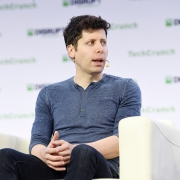The Media’s Great Awokening is Alienating the Masses
When I was a cub reporter working at the Washington Post a half-century ago, being a journalist was first and foremost a craft. I once tried to slip my opinion into an article, but my editor wrote on the copy that ‘nobody gives a shit what you think’.
It was harsh, but good training. Our primary job as journalists was not to indoctrinate but to inform. Even when writing an opinion piece, you would try backing up assertions with facts and leave room for the possibility that your point of view may not be the only permissible one.
All this may seem quaint today, as the news media – television, print, magazines and online blogs – now serve increasingly as ideological provocateurs. Overall, the whole industry is losing the trust of the public. This has now reached a nadir. In 2005, 50 per cent of Americans had confidence in the mass media. Barely a third do today, notes Gallup. Trust has also been dropping among all age groups, according to Pew.
One might have thought that the internet revolution and the growth of the ‘demassified media’ would benefit the customer, as futurist Alvin Toffler optimistically predicted. But today, just a handful of companies control the information pipelines and they largely follow the same script. Nearly two-thirds of US young adults now get their news through the big social-media platforms, like Facebook, X and TikTok.
These platforms use the content of the traditional media, largely without paying for it. Meanwhile, newspaper subscriptions, online and otherwise, have dropped from over 60million to barely 20million in three decades. ‘When you look at what’s evolved’, says Alan Fisco, president of the Seattle Times, ‘and the amount of revenue that’s going to the Googles and Facebooks of the world, we are getting the crumbs off the table’.
Like the barbarians who conquered Rome, the oligarchs have developed a taste for the vestigial print world they helped to destroy. Since the 2010s, tech moguls and their relatives have bought the New Republic, the Washington Post, the Atlantic, the Los Angeles Times and the long-distressed Time magazine.
Owning publications gives the tech oligarchs enhanced entrée into literary and journalistic circles. The publications acquired in this way get an extra edge, too. They have the luxury of producing content without worrying too much about money or customers. As tech entrepreneur Peter Thiel observes, they can indulge their own prejudices to a greater extent than businesses that might be concerned about alienating customers.
Social-media sites have fewer opportunities to cultivate customers in a crowded, competitive market. So dominant platforms like Facebook and YouTube take steps to ‘curate’ content on their sites instead. They often brand views they find objectionable as ‘disinformation’, demonetising or sometimes even censoring it completely. These tend to be conservative views, according to former employees. Algorithms intended to screen out ‘hate groups’ often spread very wide, notes one observer, since they have trouble distinguishing between actual hatred and views that conflict with the dominant culture of Silicon Valley. One possible result of this heavy-handed approach: over 70 per cent of Americans believe that social-media platforms ‘censor political views’, according to a 2018 Pew study.
Read the rest of this piece at Spiked.
Joel Kotkin is the author of The Coming of Neo-Feudalism: A Warning to the Global Middle Class. He is the Roger Hobbs Presidential Fellow in Urban Futures at Chapman University and and directs the Center for Demographics and Policy there. Learn more at joelkotkin.com and follow him on Twitter @joelkotkin.
Photo: Dion Hinchcliffe via Flickr under CC 2.0 License.








